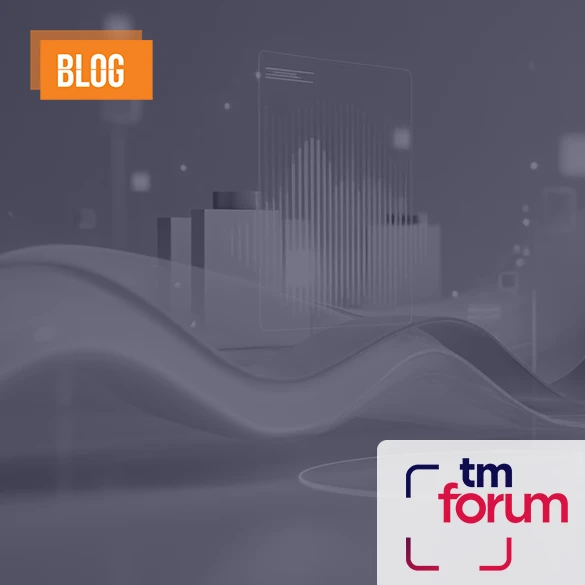Don't Punish Your Partners


Telecommunications is a live sector and changing rapidly so operators must remain responsive in order to keep up. In a hyper connected world where billions of devices are connected to each other and transmitting huge amounts of data, there is no alternative but to partner. Digital service providers (DSPs) need partners for infrastructure, partners for services, partners for sales, partners for delivery and partners for support.
Telecommunications is a live sector and changing rapidly so operators must remain responsive in order to keep up. In a hyper connected world where billions of devices are connected to each other and transmitting huge amounts of data, there is no alternative but to partner. Digital service providers (DSPs) need partners for infrastructure, partners for services, partners for sales, partners for delivery and partners for support.
To satisfy all these partners and profitably deliver complex new services to market, DSPs need agile and flexible technology solutions that can rapidly and securely manage partner product components and agreements in an automated and cost effective manner. Implementing new technology for the definition and delivery of E2E services that include partners is one of the biggest challenges facing up and coming DSPs and the most flexible and adaptable solutions will win.
Location, Location, Location
Connecting everything from cars to home appliances anywhere in the world will require local support and infrastructure. Customers expect DSPs to sell, maintain and support the machines that speak to each other anywhere in the world. Applications that are hosted in the cloud require backups and often localization to meet regulatory requirements. Ensuring access to a global network and IT infrastructure has to come from an alliance that is scattered across the globe.
As the number of connections grows exponentially and the demand for industry-unique applications escalates, the number and location of partners increases as well. New applications and content must be brought into the product catalog. New access networks and cloud infrastructure must be included in the service catalog and new devices and virtual functions become part of the resource catalog. And all of these assets must be associated with products, partners, customers and payments. As digital services are turned on and off; the partner components must also be turned on or off. Every one of those transactions affects other parts of DSP operations and unless the catalog is driving the process; data can be lost, partners confused and customers angered.
Don't forget that the data is also used for finding relevant statistics about customer experience that need to be shared with partners providing local support and sales. Adequately supporting customers worldwide is easier if consistent data is readily available to those partners and employees that need it.
Managing the Partner Lifecycle
Developing new services and strategies requires DSPs to identify the right partner and implement a common approach to interact with that partner. Without automation and data-driven processes, each partner has to be handled individually andoften manually which creates a tremendous bottleneck and expense. Developing a partner strategy that addresses the full partner lifecycle from on-boarding into the catalog, provisioning and billing; to service delivery, settlements and off-loading requires careful planning and agile systems.
With all the new service rollouts happening and changes taking place, operators must be sure to control the costs of the current solutions so they can invest in what's coming next. Developing scalable services now can help manage future costs and enable DSPs to react rapidly to market changes. Orchestration across multiple internal divisions and external partner value chains requires an end-to-end strategy and systems that are inclusive of partners from the start.
Preparing for Partners
Implementing solutions that enable DSPs to manage the definition of complex services and the inclusion of partners requires new thinking and a life cycle strategy.
CPQ
Automated configure-price-quote (CPQ) functionality is no longer an option. Multidimensional interactions across multiple channels, partners and business lines requires differentiated pricing, dynamic offer management, business rule configuration, advanced pricing and service plans. CPQ functionality with a powerful product catalog makes all of that possible while ensuring the accuracy and integrity of offer creation, quoting, and order decomposition.
Dynamic Order Management
A centralized catalog management solution that will facilitate end-to-end delivery of integrated DSP, virtual and partner services from order entry to order orchestration and fulfillment across multiple OSS/BSS processes and a variety of channels.
2-sided Business Models
Providing greater offer and business execution agility for the rollout of new services and to deliver a consistent (branded) high level customer experience by active "catalogs" with partner/supplier on-boarding and settlement processes that extend beyond configure-price-quote (CPQ).
IoT Frameworks
As DSPs need define global end-to-end architectures and services to deliver IoT, there is a need to position vendors within that framework that ensure the shift toward business- and process-driven operations. Pre-integrated end-to-end OSS, BSS and CRM solutions that enable new IoT- and M2M-driven business models are required to engage with global partner ecosystems.
E2E Customer Experience
End-to-end digital services require an end-to-end customer experience. E2E order management across all channels using a single source for product and offer definition, providing customer access via portal, trouble management and support all rely on a centralized product, service and resource catalog not complex systems integration and interfaces.
Partnering to deliver advanced digital services is both necessary and complex. Setting the stage for digital services requires that DSPs align internal processes and systems to enable the definition, configuration, quotation and fulfillment of services that include multiple components and partners. Adjacent execution of these processes in runtime through the catalog, are critical requirements as CSPs transition to DSPs.
As a solution provider Etiya has convergent OSS/BSS solutions with a centralized product catalog management with CPQ functionality for big scale businesses dealing with millions of customers and transactions with the support of powerful integration platforms for E2E service delivery.








